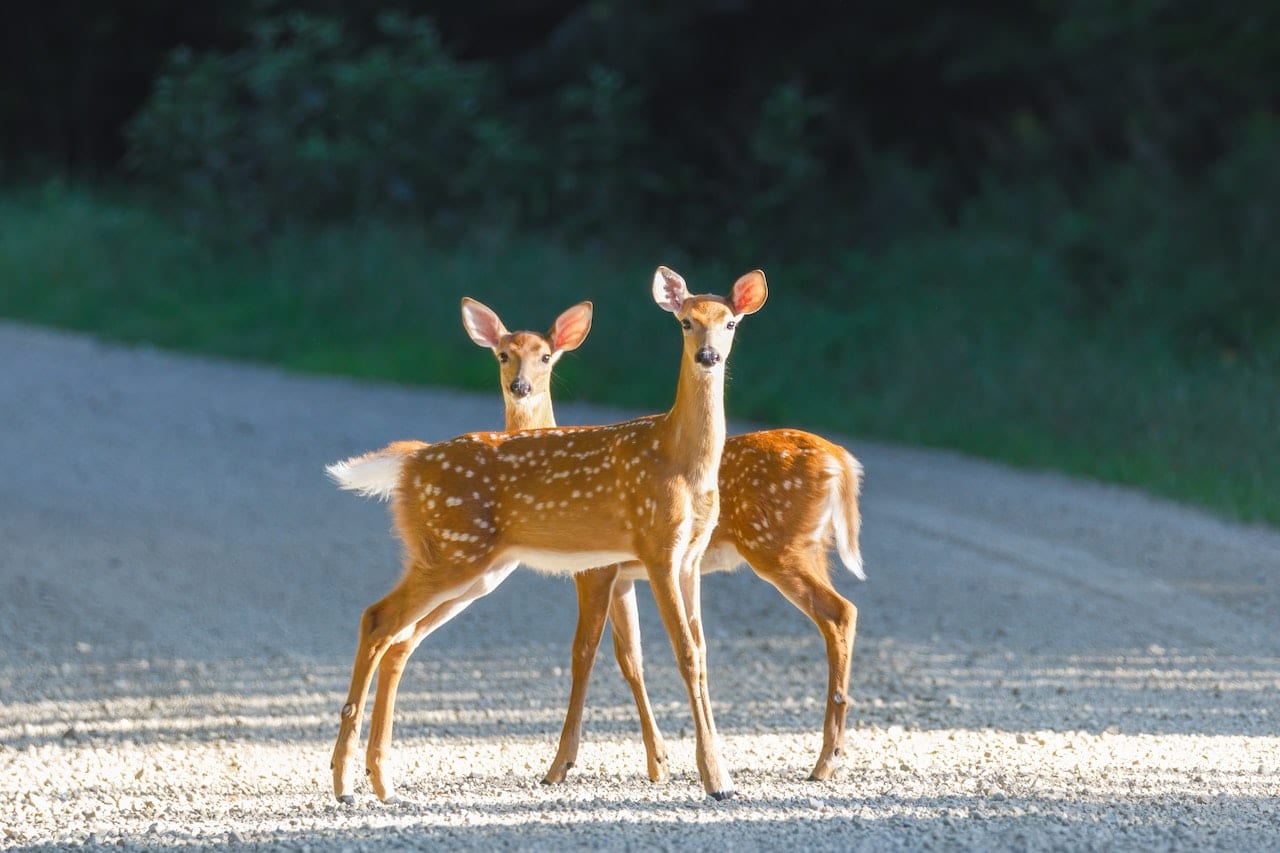Many types of wildlife call Alberta home. Unfortunately, the province sees thousands of monthly motor vehicle accidents involving animals, including deer, coyotes and moose. As man-made developments, environmental changes, and the mating season moves wildlife from their homes; it is becoming more common to see animals on your commute, particularly on rural roads. Regardless of the animal’s size, these collisions can be serious and may result in serious injury or, in some cases, death.
While there are clear steps to take following an accident with another vehicle, many drivers need to become more familiar with the protocol following a collision with an animal.
Tips for Accident Prevention
Being involved in an accident with an animal can be a traumatic experience. While most drivers have seen wildlife near the roads at one point or another, being involved in a collision with wildlife can be a shocking experience. Therefore, drivers must wear a seatbelt and remain alert, particularly in rural areas.
Where There’s One, There May Be More
If you see an animal on the road, more animals may likely be nearby. In places where animals are known to roam close to, or on, the roads, it is important to watch for signage and adjust your driving accordingly.
Be on High Alert During High-Risk Times
While animals may approach the roads at any time of year, they may be drawn closer to populated areas due to human activity in the spring, summer and fall months, specifically in November. Watching for animals around dusk and dawn is particularly important.
Reduce Your Speed
When driving through areas known to be home to wildlife, such as national parks, areas near bodies of water, or dense forests, or if you see animals while driving, slowing down can help prevent an accident by allowing for additional breaking time. If a collision occurs, driving slower can allow for a greater reaction time and may reduce the collision’s severity. For example, at a speed of 50 kilometres per hour, your vehicle may travel approximately 20 feet. However, that distance will be doubled while driving at a speed of 100 kilometres per hour, creating a greater risk of collision as reaction time is reduced.
Brake Slowly
If you see an animal on the road, it is best to slow down as much as possible to avoid impact rather than swerving to avoid colliding with the animal, as this may put you at risk of colliding with another vehicle. Suppose you have been involved in an accident that resulted in injuries due to another vehicle swerving to avoid a wildlife collision. In that case, you may be able to pursue a claim for personal injury damages.
Watch for Animals of All Sizes
While most accidents with animals involve larger wildlife, it can be more difficult to see smaller animals, including domestic ones. Unfortunately, it is not uncommon for accidents to occur in residential neighbourhoods. Regardless of where the accident occurs, it is important to be aware of your surroundings, be mindful of other drivers, cyclists and pedestrians on the roads, and do your best to avoid putting anyone else at risk of an accident.
Steps to Take if You Hit an Animal
If you are involved in a collision with an animal, and you or any of your passengers have sustained injuries, call 911. If you can, it is important to move your vehicle to a safe location and turn your hazard lights on to alert other drivers of your vehicle and the potential danger.
Once you have safely moved your vehicle, it is important to call the police, as they can help you manage the situation. Additionally, it may be necessary to call a tow truck if your vehicle is unsafe to drive. It is important to remain at the accident scene until the appropriate authorities arrive and the danger has been cleared.
If you are able to get out of your vehicle safely, it is important not to approach the wounded animal as they may become frightened and may pose a danger to themself or you. If you can do so safely, it is recommended that you take photographs of the accident scene, your injuries, and your vehicle.
Contact the Personal Injury Lawyers at Cuming & Gillespie LLP in Calgary for Skilled Representation in Personal Injury Claims
Operators of motor vehicles in Alberta must be diligent when watching for wildlife while driving. However, accidents can happen, and a wildlife-related car accident can be life-changing. At Cuming & Gillespie LLP, our trusted personal injury lawyers are experienced in helping clients move forward after an accident and recover compensation for their injuries. If you have been involved in an accident that resulted in a serious personal injury, we will help you understand your rights and explain the options available to you. To schedule a confidential consultation with one of our team members, contact us online at 403-571-0555.

